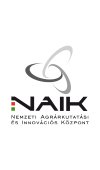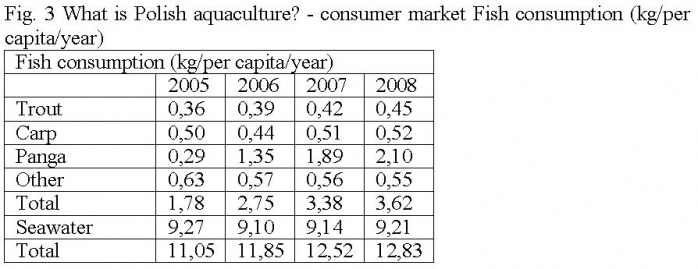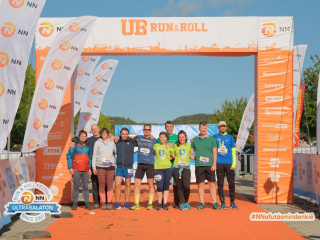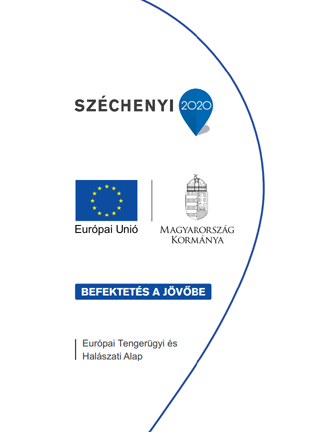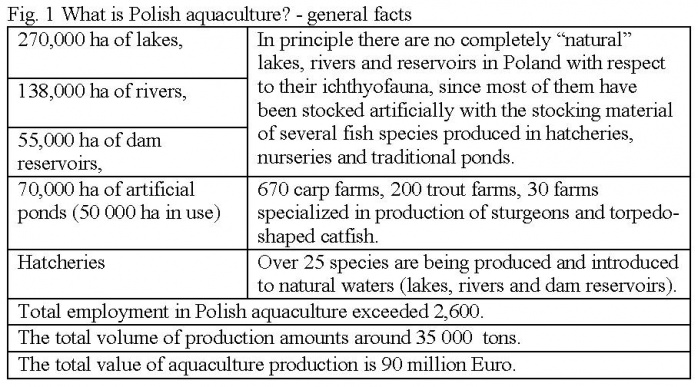
Aquaculture in Poland: Constraints and opportunities
Jacek Juchniewicz
Aller Aqua, Poland, e-mail: jj@aller-aqua.pl
Abstract
Polish aquaculture - a mixture of tradition and modernity. For over 700 years was dominated by carp production but not anymore. Two years ago trout has reached the same production level. New species like African catfish and sturgeon are strengthening their position while totally new species like Tilapia or Baramundi are knocking at the doors. At least two imported species are not knocking, they broke the doors some years ago: salmon is present for over ten years and the world phenomenon - Panga about five. Both sold in the amounts far beyond locally produced fishes. Polish pond production is declining at the same time - is this a symptom that we have to be scared about?
It seems there is big potential of Polish aquaculture driven by low fish consumption, growing personal incomes followed by higher demand for healthy food as well as increasing interest in recreational activities including fishing. Aquaculture in general, contrary to many other countries, has positive image within society. This reflects particularly to pond culture which is seen as a natural part of environment being there since ever. While most of the carps are being sold locally during Christmas time, trout which became main farmed species is sold on domestic market and exported after being processed mainly as smoked fillet. African catfish and sturgeon are sold mainly locally.
The financial status depends on the sector, farm, year, weather, currency exchange rate, etc - one can say like it always used to be... still the objective truth is that sales price remains on the same level for many years while costs increased incomparably. Last year appeared to be the worst in the history for trout producers mainly due to extraordinary strong Polish zloty especially against dollar followed by tough import from the whole world. The currency situation has turned upside down at the end of the year when zloty lost 50% it’s value from summer what resulted that there was nearly no carp import. This helped carp farmers to sell out all the fish but the prices were remarkably lower than year ago.
The suffering economy is one of the main factors pushing the farmers to improve the farms for cost optimization. Modern technologies leading to more production volume with less human labour and environmental impact is that what trout farmers are looking to. EU supporting funds are pretty much longed for. As this is rather easy for trout farmers at least to imagine the way they should go, the picture is different with carp farmers. Most of them feel something has to change but there is no one pattern nor consent of what to do. Some are looking for support money from the state and stick to old methods strengthening ecological image of the sector while others are looking for new technologies.
Feeding with complete high quality diets became popular and have proven it’s value for the farmer in many aspects (growth, health, economy, environment). „Pond in pond” technique is of some interest. All this leads to have more and more fish maybe cheaper in production but how to sell it for descent price? Is this the way to go? For sure not, at least not for everybody. The key thing seems to be opening new sales channels and forms what is happening very successfully in some places: put and take ponds, agro-tourism, happenings, new species, polyculture, processing - just to mention some of them.
Is this all enough to survive? 700 years of tradition give some confidence but the world is changing. It was never so opened and it was never so easy to move product like fish from one part of the world to another. Globalisation brings opportunities but also some threats. Poland is considered to be the big carp producer in Europe but China is producing thousand times more!. Vietnam is reaching 1 million tons of Pangasius. We can guess it’s the matter of time when somebody will repeat their success with another species.
„Time for change” said one guy and became the president of America. Probably he was right. Is it a time for change in pond culture? For sure we have to preserve this sector for indisputable values that we can list with one breath: jobs, water retention capability (flood, drought, microclimate, soil moisture), habitation of birds, other animals and plants, developing biodiversity, reduces the eutrophisation effect, the element of natural self purification of surface waters, element of landscape, recreation and finally it is an important element of our cultural identity.
This has to be repeated many, many times wherever and whenever is needed. Why? Because all this will disappear without carp in the ponds. All those listed above extra values means money that for the time being only the farmer is contributing. It doesn’t look like he will be able to do it much longer. On the other hand the sector has to notice new consumers who want to have food safety guarantee, full traceability of the product and certainty that the fish was well treated when breeding and selling. More over he will not accept mud taste nor bones.
VIDEÓ
Programajánló
Hírek
Tisztelt Látogatók!
A hazai agrár-felsőoktatás szükséges megújulásának mérföldköve az alapítványi fenntartású Magyar Agrár- és Élettudományi Egyetem (MATE) létrejötte, amely 2021. február 1-től 5 campuson, több mint 13 ezer hallgató számára fogja össze a dunántúli és közép-magyarországi élettudományi és kapcsolódó képzéseket. Az intézményhez csatlakozik a Nemzeti Agrárkutatási és Innovációs Központ (NAIK) 11 kutatóintézete is, így az új intézmény nem csupán egy oktatási intézmény lesz, hanem az ágazat szellemi, szakpolitikai és innovációs központjává válik, amely nagyobb mozgásteret biztosít a képzések, a gazdálkodás és szervezet modernizálásához, fejlesztéséhez. Az összeolvadással magasabb fokozatra kapcsolunk, a kutatói és egyetemi szféra szorosabban fonódik majd össze, aminek következtében még több érdekes, izgalmas kutatás-fejlesztés születhet majd az agrárium területén.
Kérjük, kövesse tevékenységünket a jövőben is a www.uni-mate.hu honlapon!
A szokásostól eltérően az idei évben ősszel, október 03-04 között került megrendezésre az Ultrabalaton csapatversenye. NAIK-os csapat az idei évben állt először rajthoz a 14. alkalommal kiírt versenyen.

